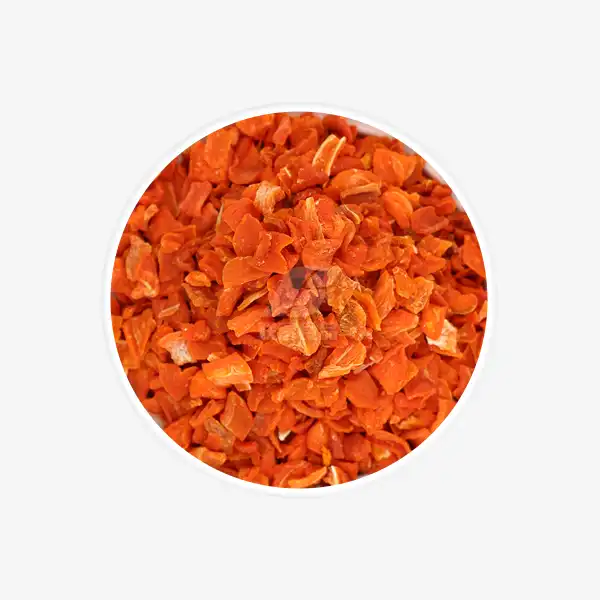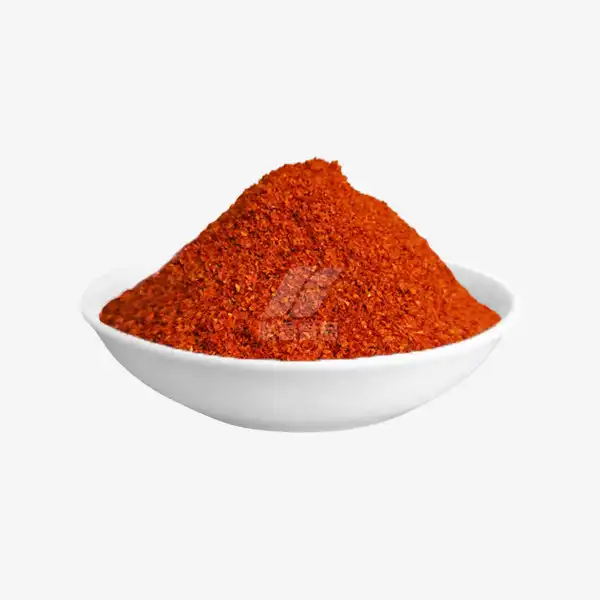Whether you're an avid gardener looking to preserve your harvest, a culinary enthusiast eager to try new techniques, or simply someone who loves the convenience of homemade pantry staples, dehydrate tomatoes for powder is a rewarding project. For more information on our range of dehydrated vegetable products, including professionally produced tomato powder, please don't hesitate to contact us at qingzhengliu@jslianfu.com.
Dehydrating Tomatoes for Powder: Tips & Tricks
Tomato powder is a versatile ingredient that can add rich tomato flavor to countless dishes. By dehydrating fresh tomatoes and grinding them into a fine powder, you can create this concentrated tomato seasoning right in your own kitchen. Whether you have an abundance of garden tomatoes or just want to try your hand at making a unique pantry staple, learning how to dehydrate tomatoes for powder is a rewarding culinary project. In this comprehensive guide, we'll explore the best tomato varieties to use, walk through the dehydration process step-by-step, and share creative ways to use your homemade tomato powder.
Best Tomatoes to Dehydrate for Tomato Powder
While you can technically dehydrate any type of tomato for powder, some varieties yield better results than others. Here are some of the top tomato options to consider:
Roma Tomatoes
Roma tomatoes are an excellent choice for dehydrating. Their oval shape and meaty texture means they have a higher ratio of flesh to seeds and juice. This allows them to dry more quickly and evenly. Romas also have a rich, concentrated flavor that intensifies beautifully when dried.
San Marzano Tomatoes
Similar to Romas, San Marzano tomatoes are prized for their thick flesh and low moisture content. They have a sweet flavor with low acidity, resulting in a well-balanced tomato powder. If you can find them, San Marzanos are worth seeking out for dehydrating.
Cherry Tomatoes
While smaller in size, cherry tomatoes can produce delicious tomato powder. Their naturally sweet flavor becomes even more pronounced when dried. Cherry tomatoes also dry relatively quickly due to their petite size. Just be aware you'll need to process a larger quantity to yield the same amount of powder as larger tomato varieties.
Beefsteak Tomatoes
Large beefsteak tomatoes can certainly be dehydrate tomatoes for powder, but require more prep work. You'll need to remove the watery seed cavities and slice them thinly to ensure even drying. The resulting powder may have a milder flavor compared to paste tomatoes like Romas.
Heirloom Tomatoes
Colorful heirloom tomatoes can produce visually striking tomato powders. However, their irregular shapes and variable water content can make drying times less predictable. For best results, choose meatier heirloom varieties and remove excess seeds and juice before dehydrating.
Preparing Tomatoes for Dehydrating
Once you've selected your tomatoes, follow these steps to prep them for dehydrating:
1. Wash tomatoes thoroughly and pat dry
2. Remove stems and any blemished areas
3. For larger tomatoes, slice into 1/4 inch thick rounds
4. For cherry tomatoes, simply slice in half
5. Gently squeeze out excess seeds and juice (optional but helps speed drying)
6. Arrange tomato slices on dehydrator trays, leaving space between pieces
Now your tomatoes are ready for dehydrating! Let's look at the actual drying process next.
Dehydrating Process
Follow these steps to properly dehydrate your tomatoes:
1. Preheat your dehydrator to 135°F (57°C)
2. Place trays of prepared tomatoes in the dehydrator
3. Dry for 8-12 hours, rotating trays occasionally for even drying
4. Check tomatoes periodically - they're done when leathery and crisp with no moisture remaining
5. Allow dried tomatoes to cool completely before grinding into powder
The exact drying time will vary based on your dehydrator, the tomato variety, and how thickly they're sliced. It's better to over-dry slightly than under-dry, as any remaining moisture can lead to mold during storage.
Grinding Dried Tomatoes into Powder
Once your tomatoes are fully dehydrated and cooled, it's time to transform them into powder:
1. Break dried tomatoes into smaller pieces
2. Working in batches, pulse in a spice grinder or high-powered blender
3. Sift powder through a fine-mesh strainer to remove any larger bits
4. Continue grinding until you achieve a fine, uniform powder
The finer you grind your tomato powder, the more easily it will dissolve when used in recipes. However, a slightly coarser grind can add nice texture to certain dishes. Experiment to find your preferred consistency.
How to Store Homemade Tomato Powder Safely?
Proper storage is crucial for maintaining the quality and safety of your homemade tomato powder. Follow these tips to keep your powder fresh and flavorful:
Choose the Right Container
Opt for airtight containers made of glass or food-grade plastic. Mason jars with tight-fitting lids work well, as do spice jars with shaker tops for easy dispensing. Avoid metal containers, as the acidity in tomatoes can react with the metal over time.
Keep it Cool and Dry
Store your tomato powder in a cool, dry place away from direct sunlight. A pantry or kitchen cupboard is ideal. Avoid storing near heat sources like the stove or dishwasher, as temperature fluctuations can cause condensation inside the container.
Use Desiccant Packets
To absorb any residual moisture and prevent clumping, consider adding a food-grade silica gel desiccant packet to your storage container. These small packets help maintain optimal dryness and extend the shelf life of your tomato powder.
Label and Date
Always label your container with the contents and date of production. While properly stored tomato powder can last up to a year, it's best to use within 6-8 months for optimal flavor.
Vacuum Sealing
For long-term storage, consider vacuum sealing portions of your tomato powder made when you dehydrate tomatoes for powder. This removes air and further protects against moisture, extending the shelf life significantly. Just be sure to use bags rated for powder storage to prevent the vacuum sealer from sucking up the fine particles.
Freezer Storage
In high-humidity environments, storing tomato powder in the freezer can help prevent moisture absorption. Place the powder in an airtight container or vacuum-sealed bag before freezing. Allow it to come to room temperature before opening to prevent condensation.
Check for Freshness
Periodically inspect your stored tomato powder for any signs of moisture, mold, or off-odors. If you notice any of these issues, discard the powder immediately. When in doubt, it's better to be safe than sorry.
Reconstitution Test
To check if your tomato powder is still good, try reconstituting a small amount with warm water. It should dissolve easily and have a fresh tomato aroma. If it smells off or doesn't mix well, it's time to make a fresh batch.
Creative Ways to Use Tomato Powder in Cooking
Tomato powder is an incredibly versatile ingredient that can add a burst of savory tomato flavor to countless dishes. Here are some innovative ways to incorporate tomato powder into your culinary repertoire:
Instant Tomato Sauce
One of the most obvious uses for tomato powder is to reconstitute it into tomato sauce. Simply mix 1 part tomato powder with 2 parts hot water, stirring until smooth. Adjust the consistency as needed and season to taste. This method is perfect for small batches of sauce when you don't want to open a whole can.
Flavor Boost for Soups and Stews
Add a tablespoon or two of tomato powder to soups, stews, and chilis for an extra layer of rich tomato flavor. It's especially useful for enhancing store-bought broths or adding depth to vegetarian dishes.
Homemade Spice Blends
Incorporate tomato powder into your own signature spice blends. It pairs well with herbs like basil, oregano, and thyme for an Italian-inspired mix. Or combine it with chili powder, cumin, and garlic for a Tex-Mex blend.
Tomato Salt
Create a flavorful finishing salt by mixing tomato powder with coarse sea salt. Use a ratio of about 1 part tomato powder to 4 parts salt. This adds a lovely umami boost when sprinkled over eggs, avocado toast, or grilled vegetables.
Pasta Sauce Enhancer
Even when using canned or jarred pasta sauce, a spoonful of tomato powder can intensify the flavor and make it taste more homemade. Stir it in while the sauce simmers for best results.
Tomato Vinaigrette
Whisk tomato powder—made when you dehydrate tomatoes for powder—into your favorite vinaigrette recipe for a unique salad dressing. It adds both flavor and a subtle thickening effect. Try it with a balsamic or red wine vinegar base.
Breading for Fried Foods
Mix tomato powder into breadcrumbs or flour used for coating chicken, fish, or vegetables before frying. This adds a savory note and beautiful color to the finished dish.
Tomato Butter
Create a compound butter by mixing softened butter with tomato powder, minced garlic, and fresh herbs. This is delicious spread on bread or melted over grilled meats and vegetables.
Pizza Dough Flavoring
Knead a tablespoon or two of tomato powder directly into your pizza dough for an extra flavor boost. This works especially well for white pizzas or those with minimal sauce.
Bloody Mary Mix
Use tomato powder to create an instant Bloody Mary mix. Combine it with water, vodka, lemon juice, Worcestershire sauce, and your favorite spices for a quick cocktail.
Tomato Powder Popcorn
Sprinkle tomato powder over freshly popped popcorn for a savory snack. Mix it with nutritional yeast for a vegan "cheesy" flavor, or combine with dried herbs for an Italian-inspired treat.
Tomato Powder Hummus
Blend tomato powder into your homemade hummus for a sun-dried tomato flavored dip. It adds rich flavor without excess moisture that could make the hummus runny.
Tomato Powder Cream Cheese
Mix tomato powder into softened cream cheese for a flavorful spread. This is delicious on bagels or as a vegetable dip.
Tomato Powder Aioli
Stir tomato powder into mayonnaise along with garlic and lemon juice for a quick aioli. This makes a great dipping sauce for fries or spread for sandwiches.
Conclusion
Dehydrating tomatoes for powder is a fantastic way to preserve the vibrant flavor of summer tomatoes all year round. By choosing the right tomatoes, properly dehydrating and storing them, and exploring creative uses in the kitchen, you can elevate countless dishes with the concentrated essence of tomato.
References
1. Johnson, M. (2021). The Complete Guide to Drying and Dehydrating Foods. Storey Publishing.
2. Smith, J. (2019). Tomato Preservation Techniques for Home Gardeners. University Extension Press.
3. Martinez, C. (2020). Innovative Uses for Dehydrated Vegetables in Modern Cuisine. Culinary Institute of America.
4. Thompson, L. (2018). Food Safety Considerations for Homemade Dried Goods. Journal of Food Science and Technology.
5. Wilson, R. (2022). Heirloom Tomato Varieties: Flavor Profiles and Preservation Methods. Seed Savers Exchange Publications.

_1729843393550.webp)









